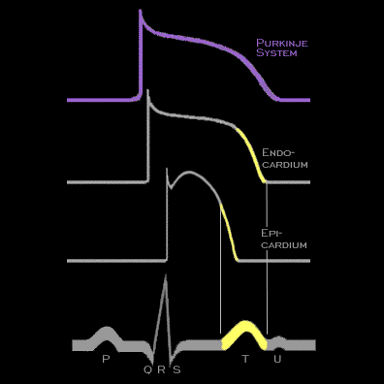
As one moves towards the epicardial surface, i.e. away from the endocardium, the action potentials first lengthen due to a unique population of cells in the mid-myocardium referred to as "M cells" and then shorten. The characteristics of rapid repolarization are reflected in the shape, duration and polarity of the T wave on the body surface electrocardiogram. As mentionhed earlier, the onset of the T wave coincides with the onset of rapid repolarization in those cells which are the first to repolarize while the end of the T wave coincides with the end of repolarization in those cells which are the last to repolarize.
